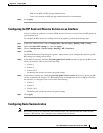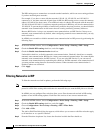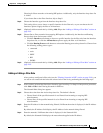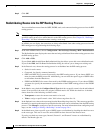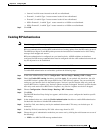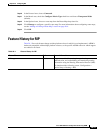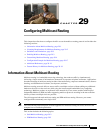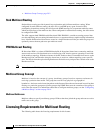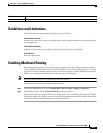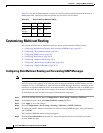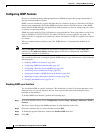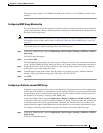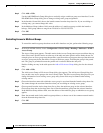
CHAPTER
29-1
Cisco ASA 5500 Series Configuration Guide using ASDM
29
Configuring Multicast Routing
This chapter describes how to configure the ASA to use the multicast routing protocol and includes the
following sections:
• Information About Multicast Routing, page 29-1
• Licensing Requirements for Multicast Routing, page 29-2
• Guidelines and Limitations, page 29-3
• Enabling Multicast Routing, page 29-3
• Customizing Multicast Routing, page 29-4
• Configuration Example for Multicast Routing, page 29-17
• Additional References, page 29-18
• Feature History for Multicast Routing, page 29-19
Information About Multicast Routing
Multicast routing is a bandwidth-conserving technology that reduces traffic by simultaneously
delivering a single stream of information to thousands of corporate recipients and homes. Applications
that take advantage of multicast routing include videoconferencing, corporate communications, distance
learning, and distribution of software, stock quotes, and news.
Multicast routing protocols delivers source traffic to multiple receivers without adding any additional
burden on the source or the receivers while using the least network bandwidth of any competing
technology. Multicast packets are replicated in the network by Cisco routers enabled with Protocol
Independent Multicast (PIM) and other supporting multicast protocols resulting in the most efficient
delivery of data to multiple receivers possible.
The ASA supports both stub multicast routing and PIM multicast routing. However, you cannot
configure both concurrently on a single ASA.
Note The UDP and non-UDP transports are both supported for multicast routing. However, the non-UDP
transport has no FastPath optimization.
This section includes the following topics:
• Stub Multicast Routing, page 29-2
• PIM Multicast Routing, page 29-2



